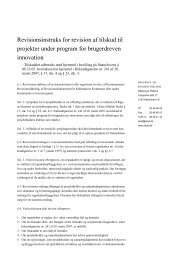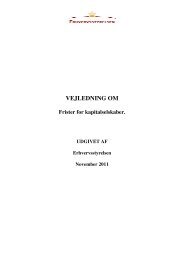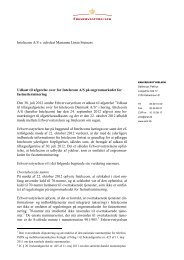Risk-Based Approach â Guidance for Money Service Businesses
Risk-Based Approach â Guidance for Money Service Businesses
Risk-Based Approach â Guidance for Money Service Businesses
Create successful ePaper yourself
Turn your PDF publications into a flip-book with our unique Google optimized e-Paper software.
<strong>Risk</strong>-<strong>Based</strong> <strong>Approach</strong> – <strong>Guidance</strong> <strong>for</strong> <strong>Money</strong> <strong>Service</strong> <strong>Businesses</strong> - July 2009In many of these scenarios the customer‟s activity may be apparent both during point-of-saleinteraction and during back-end transaction monitoring.b) Transactions received:The domestic wire transfers received by an MSB company of EUR/USD 1 000 or more should beaccompanied, within the message or payment <strong>for</strong>m, by the originator‟s account number or aunique identification number. Cross-border wire transfers of EUR/USD 1 000 or more shouldinclude full originator in<strong>for</strong>mation (name of the originator, the originator‟s account number or aunique reference number, the originator‟s address or national identity number or customeridentification number or date and place of birth). There<strong>for</strong>e MSBs should pay special attention: To transactions that are not accompanied by the complete originator in<strong>for</strong>mation required. When additional in<strong>for</strong>mation has been requested to an ordering MSB, but is still lacking.Customer receives transactions in a pattern consistent with criminal proceeds, e.g. from elderlypeople in a wide geographic area, in amounts consistent with a lottery scam.Customer receives transfers in seasonal patterns consistent with criminal proceeds; e.g. marijuanagrowing season, illegal immigration.Large number of transactions received at once or over a certain period of time which do not seemto match the recipient‟s usual needs or receiving pattern.Agents <strong>Risk</strong>114. An overall risk assessment should analyze specific factors which arise from the use of certainagents 13 to facilitate the delivery of MSBs products and services. In some cases these agents may also usethe products and services themselves. Assessing agent risk is more complex <strong>for</strong> those MSBs with aninternational presence due to varying jurisdictional requirements and the logistics of agent oversight. Thisagent risk analysis should include such factors as the following based on the reasonableness andappropriateness of the factor within the MSB‟s business model, systems and controls:Agents conducting an usually high number of transactions with another agent location,particularly with an agent in a geographic area of concern.The transaction volume of the agent, either overall or relative to typical past transaction volume.Agents that have been referred by other departments of the MSB.Agents that have been the subject of negative attention from credible media or law en<strong>for</strong>cementinquiries.Agents that are not in compliance with internal policies and external regulation, such ascompliance programme requirements, monitoring, reporting, or Know Your Customer practices.13FATF Glossary gives the following definition to agent: “<strong>for</strong> the purpose of SRVI, an agent is any personwho provides money or value transfer service under the direction of or by contract with a legally registeredor licensed remitter (<strong>for</strong> example, licencees, franchisees, concessionaires).32 - © 2009 FATF/OECD
















